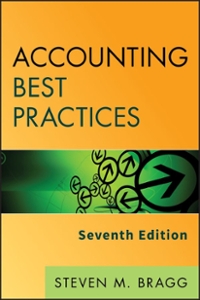Question
Joe is 68 and retired.He receives retirement benefits from a variety of sources.He receives distributions from his traditional IRA, a private employer pension plan, and
Joe is 68 and retired.He receives retirement benefits from a variety of sources.He receives distributions from his traditional IRA, a private employer pension plan, and Social Security.At the end of the year, what documents will he receive that reflect these payments?
Select one:
a.A Form 1099-R for the private employer pension and the IRA distribution and a Form SSA-1099 for the Social Security
b.A Form 1099-R from all three sources
c.A Form 1099-R for the private employer pension, a Form 1099-IRA for the IRA and a Form SSA-1099 for the Social Security
d.A Form 1099-IRA for the traditional IRA distribution and a Form 1099-R for the other two distributions
Adam and Wendy are both considering contributing to an IRA.They are married, both are over age 50, and both are employed and covered by retirement plans at work.Their modified AGI is $96,000.What is the maximum amount they can contribute and deduct on their tax return?
Select one:
a.$12,000
b.$11,000
c.$13,000
d.$14,000
Susan, single, is 64 years old and is contemplating applying to receive her Social Security benefits when she turns 65.Which of the following statements regarding Social Security benefit is correct?
Select one:
a.Social Security benefits are not taxable if her other income, which includes any tax-exempt interest, plus of the Social Security benefit, is $25,000 or less.
b.Social Security benefits are 50% taxable if her other income, including tax-exempt interest income, is more than $25,000.
c.Social Security benefits are always tax-free.
d.Up to 85% of Social Security benefits are taxable if other income, including tax-exempt interest, plus 100% of her Social Security benefit is more than $34,000.
Samantha is a new graduate and starts her new job in 2018.Her employer has set up a SIMPLE retirement plan for each eligible employee.All the following are correct,except:
Select one:
a.Self-employed taxpayers are not eligible to participate in a SIMPLE retirement plan.
b.The employer may choose to match dollar-for-dollar employee contributions up to 3% of the employee's compensation for 2018.
c.A SIMPLE plan can be established for an employee if that employee received at least $5,000 in compensation during the 2 years prior to the current calendar year and is reasonably expected to receive at least $5,000 during the current calendar year.
d.The employee's salary reduction contribution to the SIMPLE plan for 2018 is limited to $12,500.
Sue is a self-employed.Her net profit from the self-employment in 2018 is $150,000.What's her deductible portion of SE tax on line 27 of Schedule 1?
Select one:
a.$9,969
b.$10,597
c.$11,475
d.$9,823
Young is single and self-employed.His net profit from the business is $100,000.His SE tax on Schedule SE is $14,130.He contributed $6,000 to his self-employed SEP IRA account.He also paid $7,800 self-employed health insurance premium in 2018.What is the amount of adjustments to income on line 36 of Schedule 1 (Form 1040)?
Select one:
a.$13,065
b.$14,865
c.$13,800
d.$20,865
Ester, 55, is single.She has earned income.Her modified AGI is $62,000.She is considering contributing $6,500 to her IRA account or Roth IRA account.All the following are correct,except:
Select one:
a.If she is covered by a retirement plan at work for the tax year, her contribution of $6,500 to her traditional IRA if fully deductible.
b.She can contribute $6,500 to her Roth IRA account; however, it is not deductible on her tax return.
c.Ester plans to work until she is 75 years old.She can continue to contribute to her traditional or Roth IRA as long as she has earned income.
d.She can split the funds between the traditional IRA account and the Roth IRA account if the total amount does not exceed $6,500.
John is considering establishing a health saving account.Which of the following statements regarding health savings account (HSA) is correct?
Select one:
a.Both eligible spouses can have a joint HSA account.
b.The taxpayer can be enrolled in Medicare or be claimed as a dependent on another's return.
c.The taxpayer owns the account and the account moves with the taxpayer even if he changes employers.
d.Contributions by an S corporation to a 2% shareholder-employee's HSA for services are not included in the employee's W-2 and not deductible
Step by Step Solution
There are 3 Steps involved in it
Step: 1

Get Instant Access to Expert-Tailored Solutions
See step-by-step solutions with expert insights and AI powered tools for academic success
Step: 2

Step: 3

Ace Your Homework with AI
Get the answers you need in no time with our AI-driven, step-by-step assistance
Get Started


